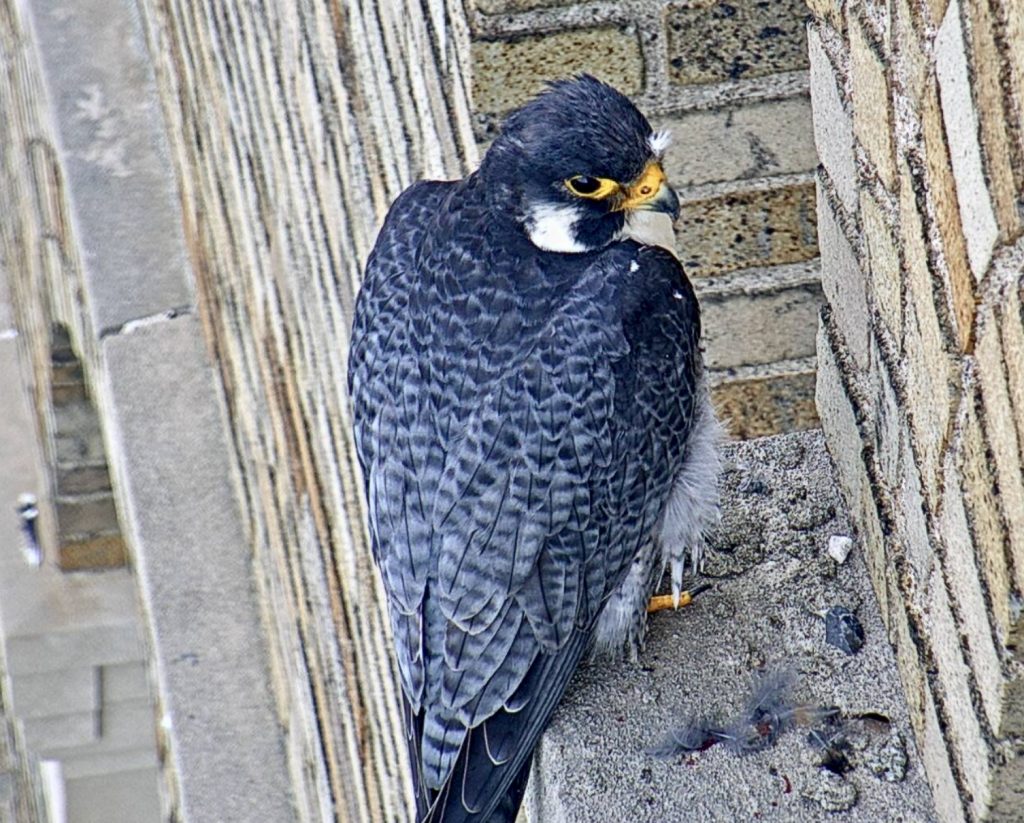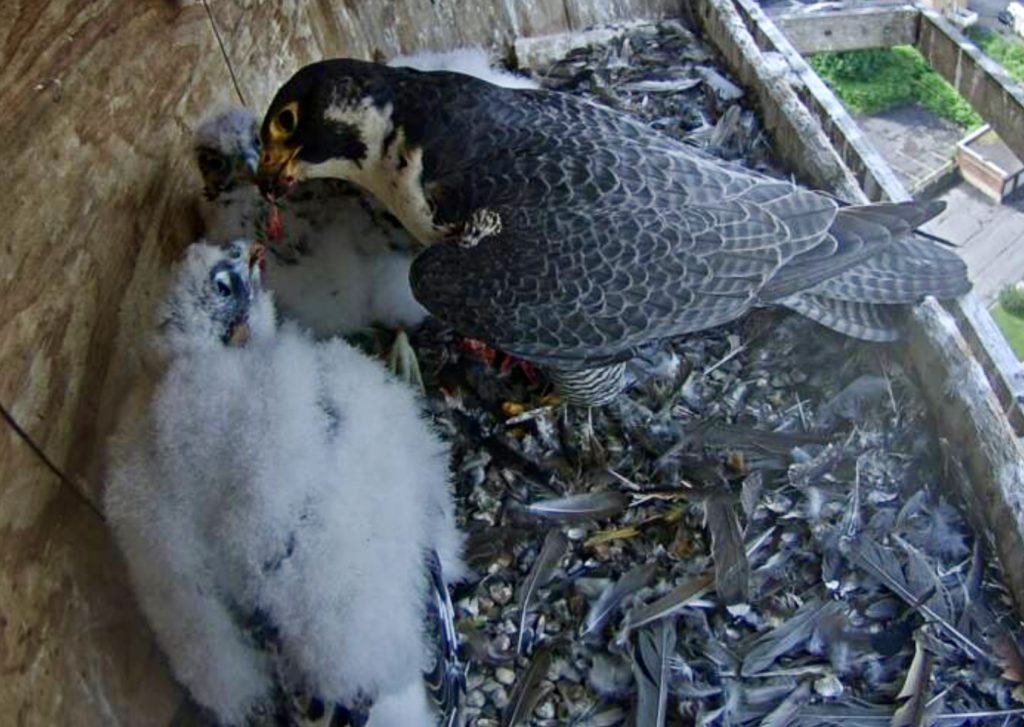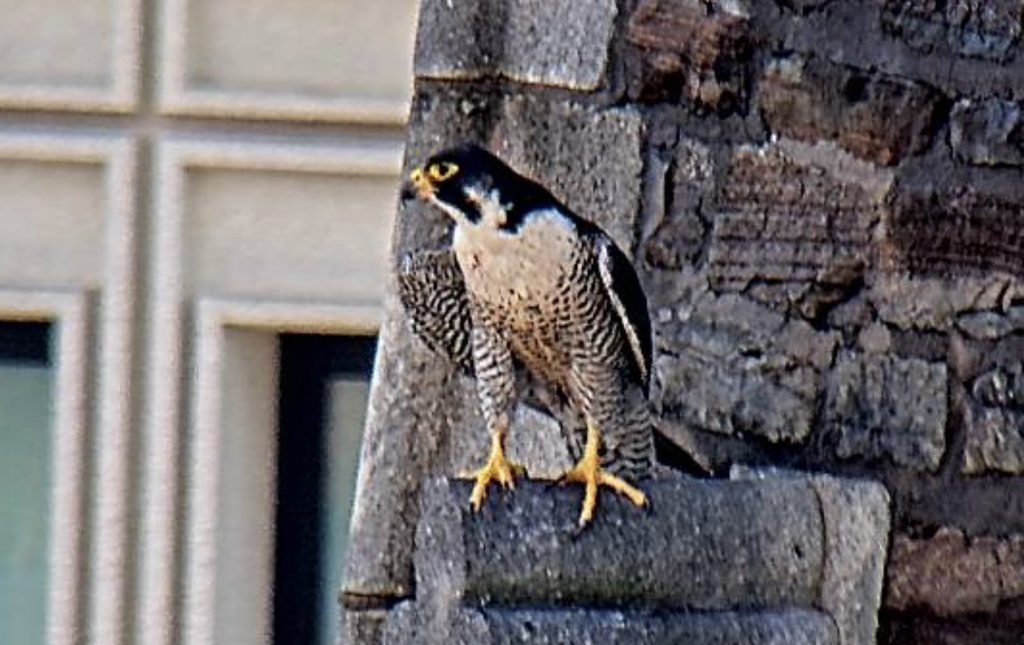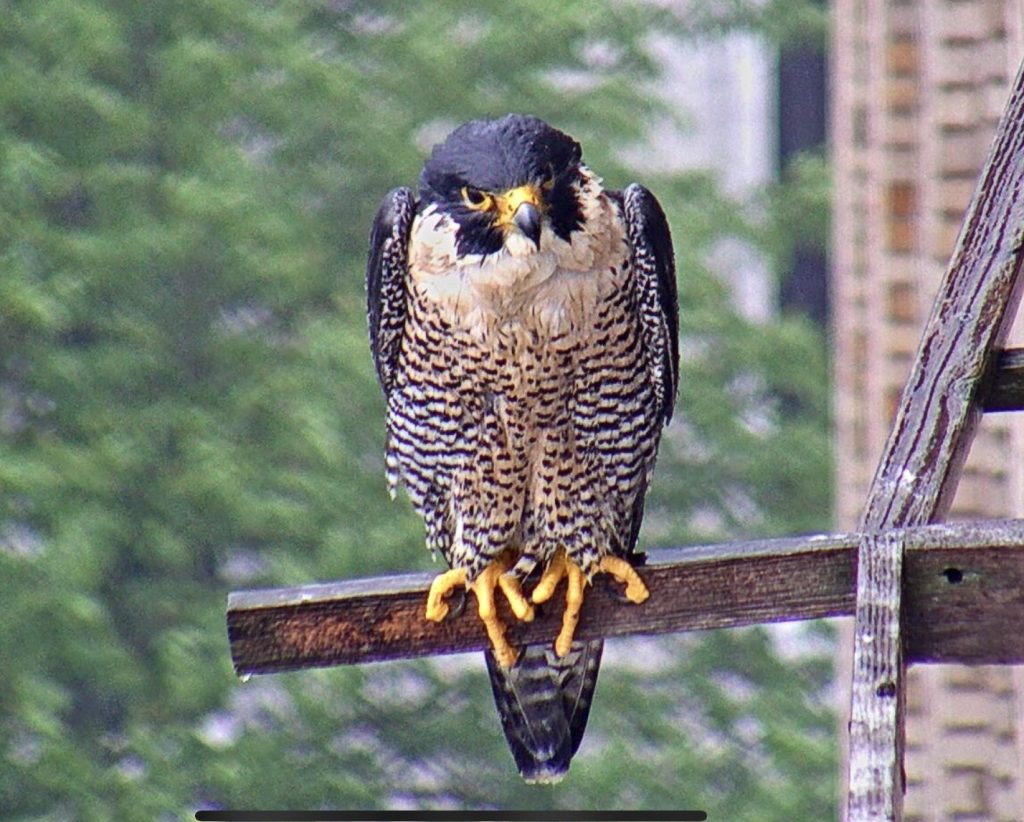Update for Monday, May 27, 2024
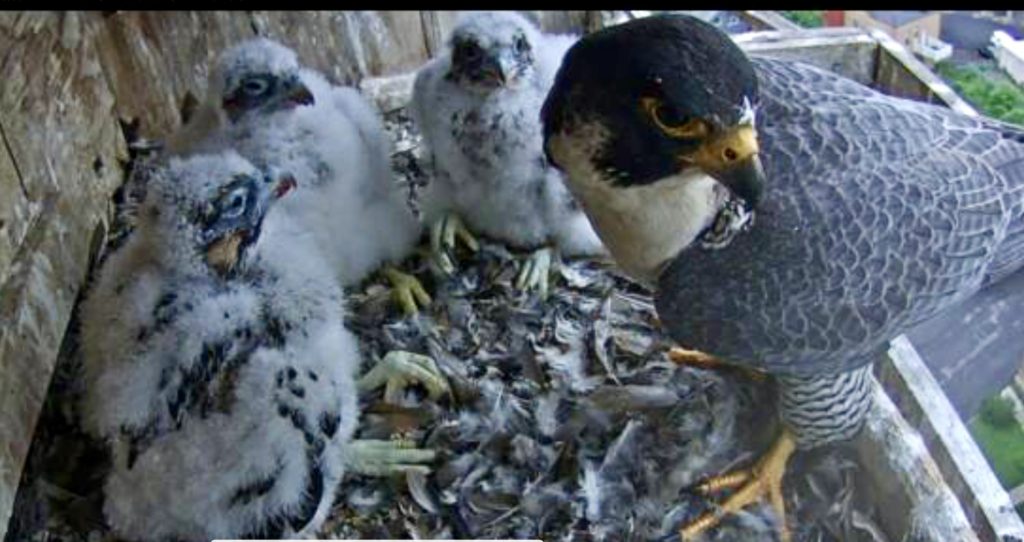
Almost every year, we face challenges in distinguishing male from female nestlings in the Utica nest. It’s quite common for us to mistakenly give a female a male name or vice versa. Fortunately, the birds never seem to mind or get offended by our mix-ups. One reliable method for differentiating between the sexes is through measurements, as there is a notable size difference between adult males and females. Female peregrine falcons are generally larger and heavier than males, a trait known as reverse sexual dimorphism. However, this size difference is not as pronounced in nestlings, making it challenging to assess with the naked eye. Detailed measurements of the nestlings’ tarsus (leg bone), beak, and overall weight can provide clues, but these often require careful handling and precise tools, which can be stressful for the birds.
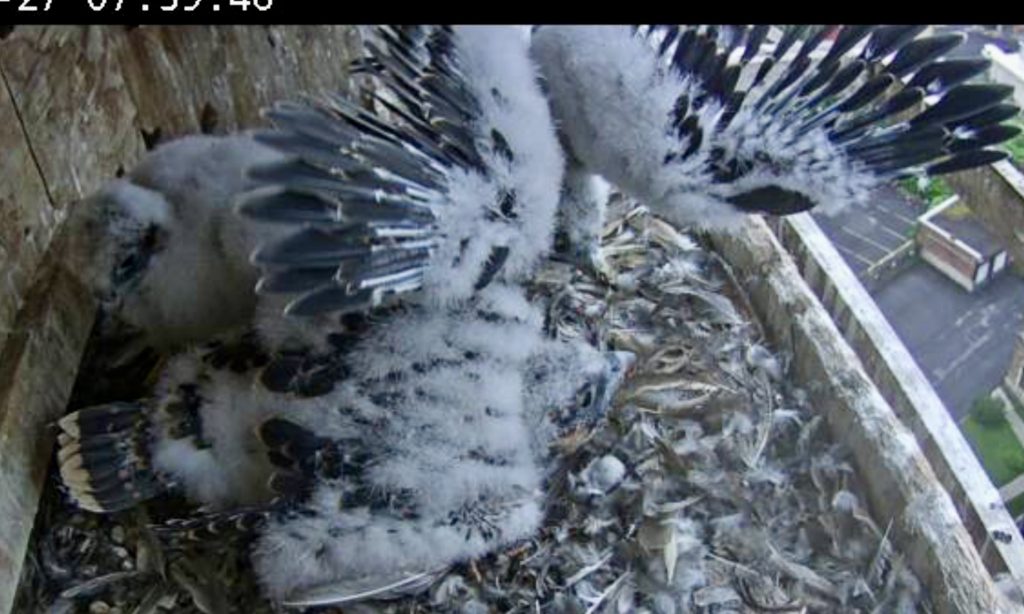
If the Utica birds were subject to banding, then they would be measured and weighed, but since they are not, and it would not be safe to do so at their nest box, we can only make educated guesses regarding their measurements and weights. The complicating factor with gauging the size of our birds is the wide-angle lenses on our nest cameras. They always show a distorted view of the size of the birds and their legs. Generally, whichever bird is closer to the middle of the camera frame looks the largest. It is typically only when the nestlings start emerging from the box and going to the verandas or the cross perch that we get a true idea of their size. This is when we can see them with our roof cameras, which do not distort. This year, it seems particularly hard for us to determine gender via visual inspection. We are still reasonably sure that we have one definite female and one definite male, but the jury is still out, and we may not know for sure until fledging is upon us in a couple of weeks.
